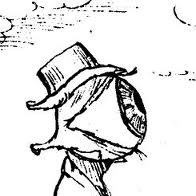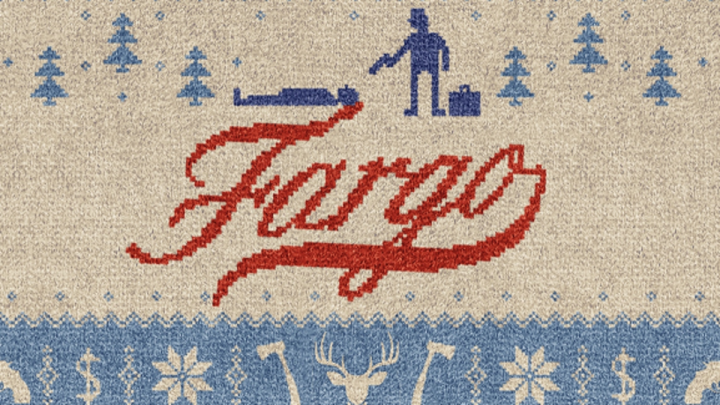After two episodes, I have officially signed on as a fan of FX’s Fargo mini-series. The worst things I can say about it are as follows:
- Nods to the 1996 film are so constant that at times they feel distracting.
- Billy Bob Thornton’s Lorne Malvo is essentially Anton Chigurh from “No Country For Old Men”…with a sense of humor.
- Martin Freeman’s Lester Nygaard is essentially Jerry Lundegaard from 1996’s “Fargo” …with a heavier chip on his shoulder.
Fortunately…all of those complaints are also part of the fun. I loved the film Fargo. Billy Bob Thornton and Martin Freeman have been delightful to watch.
But….the mission of my blog is not to be a fan…it is to find philosophical value within the entertainment I use to escape the real world….my anesthesia, you might say…
In the second episode of the 10-part Fargo mini-series, Lou Solverson laments that his little girl (Deputy Molly Solverson) is still living in, “a hard world of drills and needles,” as he reminisces about the first time she had to be put under general anesthesia for dental work. What’s debatable is whether Lou more deeply regrets the actual existence of the drills and needles, or the fact that, at 31 years old, his daughter is no longer anesthetized.
Essentially, this show is all about the power of anesthesia. Fargo’s essential premise seems to be that there is a big dark world out there: you can either bend it to your will or breathe in the sweet, “Tooty Frootie” scent of ignorant bliss.
I contend that despite the series’ endless metafictional nods to its 1996 counterpart, it is introducing viewers to distinctly unique, albeit familiar, territory.
In 1996, Joel and Ethan Coen’s Fargo told the story of a family-oriented community that was dragged into a twisted jungle of savagery when one of its members sacrificed the morality of his world in an attempt to bypass a few rungs on the socioeconomic ladder. The film’s strong female lead, despite embracing the family-oriented morality of her community, showed a welcome, but unexpected willingness to investigate and accept the influx of savagery. In the end the film drew a lot of its dramatic power from the sadness inherent in the fact that selfish and power-hungry forces were seeping into the fabric of even the most innocent people and places in the world.
Early on in the 1996 film, the elderly Wade Gustafson scorned the idea that his grandson would walk out on a family dinner to hang out with friends at “the MACdonalds.” As audiences step into television’s contemporary (though set in 2006) version of Fargo…we see that Wade’s fears have come to fruition: everyone is hanging out at McDonalds (it’s called a “Happy Meal,” so, I must be happy….right?).
Everyone is existing under general anesthesia. Nobody wants to see how far from the old-timey, family-friendly middle-class-America image this world has fallen…so they distract themselves in various ways. We see characters worshiping more expensive clothing and home comforts. We see characters amassing weapons. We see characters reverting to the social order of their former high-school hierarchy….and we see characters eat A LOT of junk food.
The Fargo mini-series reinforces this sense of mass-anesthesia most brilliantly by using food as a metaphor. Instead of homey meals made by mom and enjoyed by the family, TV’s Fargo is a world in which homemade food is best represented by frozen tater-tots. Officer Gus Grimly brings home burgers and chicken nuggets for his little girl (who is used to this type of dinner, as evidenced by her inquiry regarding the “dipping sauces”), and when the wife of the fallen police chief tells the tale of a former cop who was killed by a softball-size hailstone, Deputy Solverson is most interested in the flavor of the milkshake the victim was drinking at the time.
Heck, this rendition of Fargo doesn’t even need food metaphors to show us the decline of family life in small-town Minnesota. Martin Freeman’s Lester Nygaard started the series under open and brutal emotional assault from his wife. We learned that Gus Grimly is a single dad (and we had a widowed single mother by the end of the first episode). Audiences even had to endure the most extreme and disturbing passing-on of the bullying gene ever captured on camera (the bully was also a criminal and an adulterer, for good measure).
If 1996’s Fargo was an elegy for fading small-town family values, then the 2014 edition is a plea. This show is begging the world to wake up from the anesthesia, open their eyes, and see their neighbors for who they are. Put down that tater-tot, Fargo begs us, and remember that no matter how ugly things get, we have to be responsible for our communities. Isolation and self-preservation have no place in this world. In this world, the “bad-guys” feed off of your blissful ignorance and turn it to their advantage.
I for one, hope to see a lot more characters “wake up” by the end of the mini-series.
Be on the lookout for a follow-up some time in the next few weeks…I have barely scratched the surface of what this show has to offer an existential audience.

